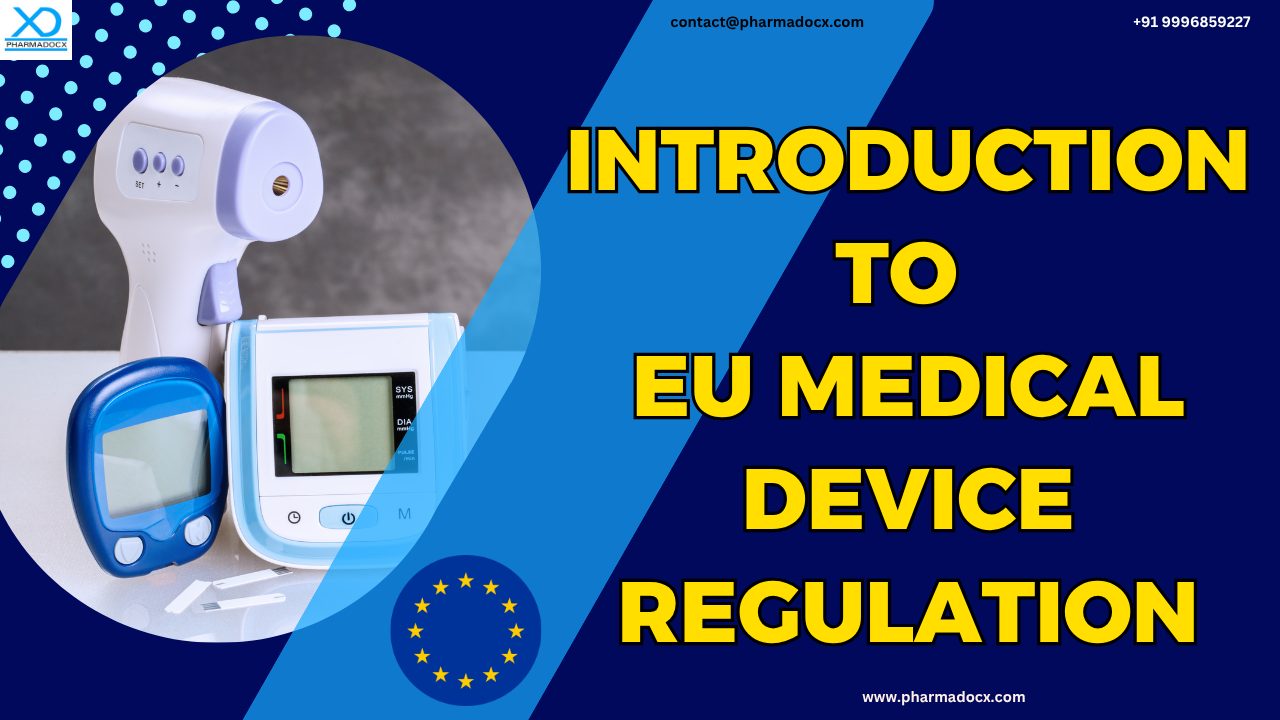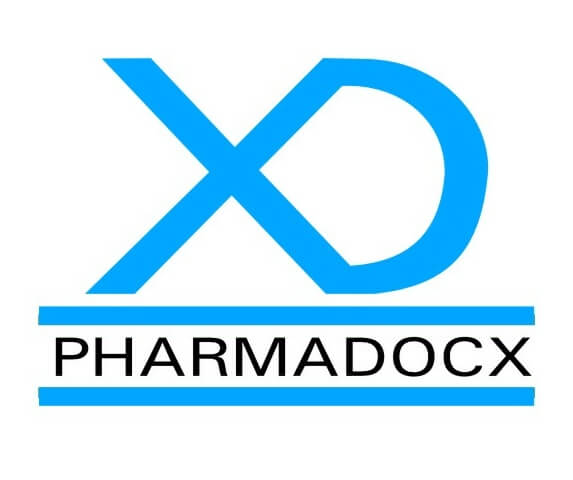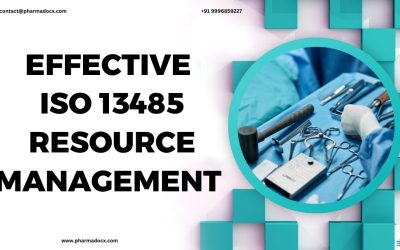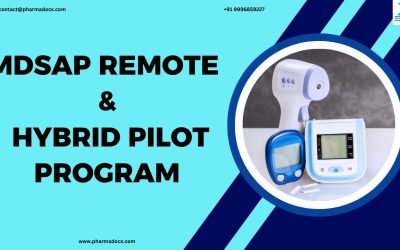European Union Medical Device Regulation (EU MDR) 2017/745 is a framework governing safety and performance of medical devices in EU. It came into full effect on May 26, 2021, replacing the previous Medical Device Directive (MDD). It aims to address gaps in oversight and improve patient safety. MDR applies to a wide range of products, including traditional medical devices, implantables, aesthetic devices, and software with medical purposes. EU MDR introduces stricter requirements for clinical evaluation, post-market surveillance, traceability through (UDI), and transparency via the EUDAMED database. Manufacturers must comply with detailed safety and performance standards mentioned in the regulation. They must work with designated Notified Bodies for conformity assessment. Additionally, they must appoint a Person Responsible for Regulatory Compliance (PRRC) to ensure ongoing adherence to EU Medical Device Regulation.
Why was EU Medical Device Regulation introduced?
EU Medical Device Regulation was introduced to address weaknesses in the previous directive (MDD), improve patient safety, and harmonize device regulation across EU member states.
What is the scope of EU Medical Device Regulation?
EU Medical Device Regulation is a comprehensive legal framework for ensuring the safety, performance, and regulatory oversight of medical devices placed in the EU market. It came into full effect on May 26, 2021, replacing the older Medical Device Directive (MDD). EU MDR applies to all medical devices intended for human use, including implantable devices and certain aesthetic products with similar risk profiles. MDR was introduced to improve transparency, traceability, and safety of medical devices across the EU.
What are the differences between MDD and the MDR?
The EU MDR introduces stricter and more comprehensive requirements than the older MDD. It has a strong focus on patient safety, transparency, and post-market surveillance. We have prepared the following table comparing EU MDD and EU MDR.
| Feature | Medical Device Directive (MDD) | Medical Device Regulation (MDR) |
| Legal Nature | Directive | Regulation (directly applicable across EU) |
| Length & Structure | 23 Articles, 12 Annexes | 123 Articles, 17 Annexes |
| Scope | Medical devices only | Includes medical devices, aesthetic devices, and certain software with medical purposes |
| Device Classification | Class I, IIa, IIb, III | Same classes but with stricter classification rules and reclassification of some devices |
| Clinical Evaluation | Less stringent; often based on equivalence | Requires robust clinical data and post-market clinical follow-up (PMCF) |
| Post-Market Surveillance (PMS) | Not clearly defined | Mandatory PMS plans and periodic safety update reports (PSUR) |
| Traceability | No UDI system | Mandatory Unique Device Identification (UDI) for all devices |
| Transparency | Limited public access to data | EUDAMED database centralizes and publishes device, manufacturer, and vigilance data |
| Economic Operators | Manufacturer focus | Clearly defines roles for Manufacturer, Authorized Representative, Importer, Distributor |
| Person Responsible for Regulatory Compliance (PRRC) | Not required | Mandatory for manufacturers and authorized representatives |
| Notified Bodies | Less oversight; fewer audits | Stricter designation and oversight; more frequent audits and technical reviews |
| Software as a Medical Device (SaMD) | Often classified as Class I | Reclassified as higher risk (Class IIa or above) depending on intended use |
| Risk Management | Referenced but not enforced | Strong alignment with ISO 14971; lifecycle risk management is mandatory |
Key features and requirements of EU MDR
We have highlighted the key features and requirements of EU Medical Device Regulation.
- Device classification: Medical devices are categorized into Class I, IIa, IIb, and III based on associated risk. Higher classes require more rigorous oversight. MDR introduces stricter classification rules, especially for software and implantables.
- General safety and performance requirements (GSPRs): This component replaces the “Essential Requirements” under MDD. It is detailed in Annex I, covering design, manufacturing, labeling, and clinical safety.
- Clinical evaluation and evidence: EU MDR requires robust clinical data to demonstrate safety and performance. High-risk devices must undergo clinical investigations and Post-Market Clinical Follow-up (PMCF).
- Post-market surveillance (PMS): Manufacturers must implement a PMS plan and submit periodic safety update reports (PSUR).Vigilance reporting is mandatory for serious incidents and corrective actions.
- Unique device identification (UDI): UDI has been introduced to improve traceability and reduce counterfeit risks. Each device must carry a UDI on its label and packaging.
- EUDAMED database: Centralized EU database for device registration, vigilance, clinical investigations, and certificates has been introduced. It enhances transparency and public access to device information.
- Economic operators: EU Medical Device Regulation clearly defines roles and responsibilities for manufacturer, authorized representative, importer, and distributor
- Person responsible for regulatory compliance (PRRC): As per EU MDR guidelines, every manufacturer and authorized representative must appoint a PRRC with specific qualifications to oversee compliance.
- Notified bodies: MDR tightens oversight of Notified Bodies, requiring re-designation and stricter audits. They assess conformity for medium- and high-risk devices.
Major changes from MDD that have been introduced in EU MDR
- Stricter clinical evidence requirements: Clinical evaluations must be more robust, especially for high-risk devices.
- Unique Device Identification (UDI): UDI has been introduced to improve traceability.
- Expanded scope: Includes software and certain cosmetic devices.
- EUDAMED database: Centralized EU database for transparency and regulatory tracking.
An introduction to the key terms and abbreviations mentioned in EU Medical Device Regulation
The following terms form the backbone of EU MDR. Hence, it is vital to have a clear understanding of these terms.
Key abbreviations
- UDI: UDI stands for Unique Device Identification. UDI is a system to identify and trace medical devices throughout their lifecycle.
- EUDAMED: EUDAMED stands for European Database on Medical Devices. It is the centralized EU database for device registration, vigilance, and transparency.
- NB: NB stands for Notified Body. NB is an organization designated to assess the conformity of devices before market placement.
- GSPR: GSPR stands for General Safety and Performance Requirements. It replaces “Essential Requirements” from MDD and is listed in Annex I of MDR.
- PMS: PMS stands for Post-Market Surveillance. It is ongoing monitoring of device performance and safety after-market launch.
- PRRC: PRRC stands for Person Responsible for Regulatory Compliance. It is mandatory for manufacturers to employ the PRRC for ensuring MDR compliance within the organization.
- CE: CE stands for Conformité Européenne. CE is a marking that indicates a product complies with EU safety, health, and environmental requirements.
- CAPA: CAPA stands for Corrective and Preventive Action. It is a quality system process for addressing nonconformities and preventing recurrence.
- QMS: QMS stands for Quality Management System. It is a structured system of procedures and processes to ensure product quality and regulatory compliance.
- IVD: IVD stands for In Vitro Diagnostic. IVDs are devices used to perform tests on samples taken from the human body. They are governed by IVDR (EU 2017/746).
- ISO: ISO stands for International Organization for Standardization. It develops international standards like ISO 13485 and ISO 14971 for medical devices.
- ISO 13485: ISO 13485 provides guidelines for quality management systems for medical devices. It provides specific requirements for a QMS specific to medical devices.
- ISO 14971: ISO 14971 focuses on risk management of medical devices. It provides standards for identifying and managing risks throughout the device lifecycle.
Key terms to keep in mind
- Notified body: Notified body is an organization designated by an EU country to assess the conformity of certain products before being placed on the market.
- Conformity assessment: Conformity assessment is the process by which a manufacturer demonstrates that a device meets the applicable regulatory requirements.
- Clinical evaluation: A systematic process to assess and analyze clinical data to verify the safety and performance of a device.
- Post-market surveillance (PMS): Ongoing monitoring of a device’s performance after it has been placed in the market.
- Vigilance: Reporting and investigation of serious incidents and field safety corrective actions.
- Economic operators: Economic operators are manufacturers, authorized representatives, importers, and distributors. Each has defined responsibilities under MDR.
In this blog, we have introduced the important terms and provided a brief overview of EU Medical Device Regulation. For detailed guidelines or guidance on the EU MDR , feel free to get in touch with our experts. Drop an email at [email protected] or call/Whatsapp on 9996859227.





